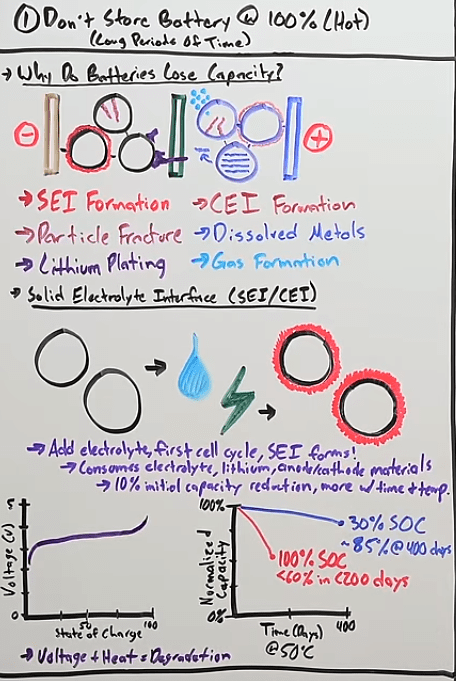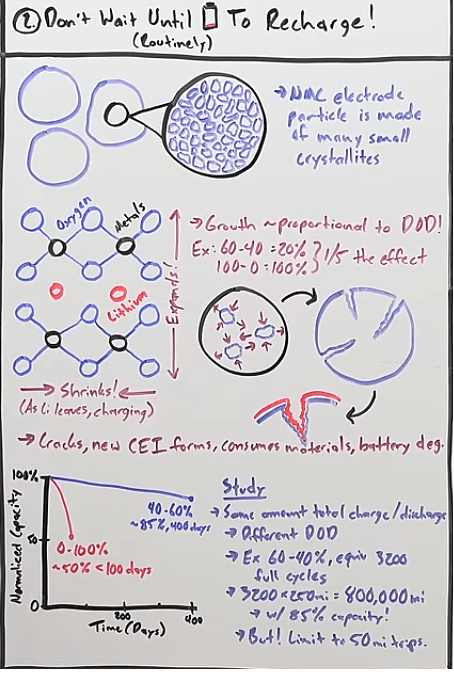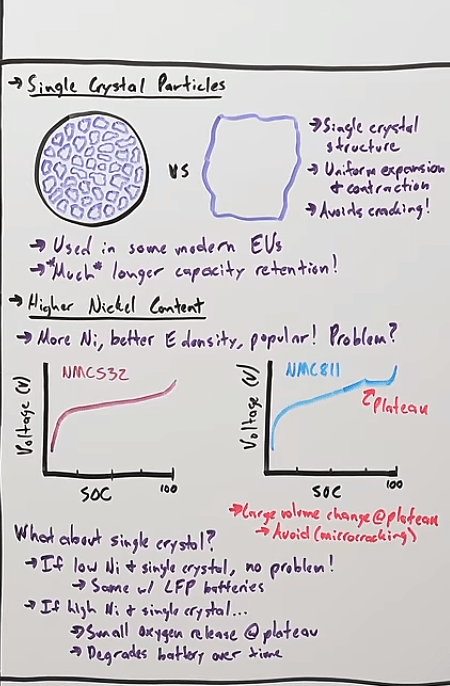Electric cars have witnessed a surge in popularity owing to their numerous advantages, including lower maintenance requirements. However, the cost of replacing electric car batteries remains a significant concern. In this article, we will explore the best and worst practices for extending the lifespan of electric car batteries, focusing on NMC batteries made up of nickel, manganese, and cobalt oxides.
Understanding Battery Degradation: To comprehend the best practices, it’s crucial to understand why batteries degrade over time. One major factor is the formation of the solid electrolyte interface during the initial charge cycle, which consumes materials from the cathode and anode, leading to a 10% loss in capacity. Additionally, higher temperatures and increased voltage (state of charge) accelerate reactions within the battery, resulting in more rapid degradation.
Best Practices:
- Avoid Storing at 100% Charge in High Temperatures:
- Storing an electric car’s battery at 100% state of charge in hot environments accelerates degradation.
- Recommendation: Target a 30% state of charge for long-term storage in high temperatures.

2. Charge Conservatively and Avoid Low Depths of Discharge:
-
- Regularly discharging the battery to low levels contributes to crystal growth and cracking, leading to capacity loss.
- Recommendation: Stick to low state-of-charge ranges, with 25% being an optimal target.

3. Limit Charging to 100%:
-
- Charging to 100% induces stress on the battery, especially in high-nickel-content batteries, causing gas formation and degradation.
- Recommendation: Charge to 75% for daily use, with occasional 100% charges for long trips.

Explanation of Best Practices:
- Storing at lower states of charge minimizes the impact of reactions that degrade the battery over time.
- Conservative charging practices, such as avoiding low depths of discharge, reduce crystal growth and cracking within the battery.
- Limiting charging to 75% helps avoid the detrimental effects associated with high states of charge and high-nickel-content batteries.
Worst Practices:
- Storing at 100% Charge in High Temperatures:
- Leads to rapid degradation due to increased reactions within the battery.
- Frequently Discharging to Low Levels:
- Causes increased crystal growth and cracking, accelerating battery degradation.
- Regularly Charging to 100%:
- Induces stress on the battery, especially in high-nickel-content batteries, leading to gas formation and degradation.




